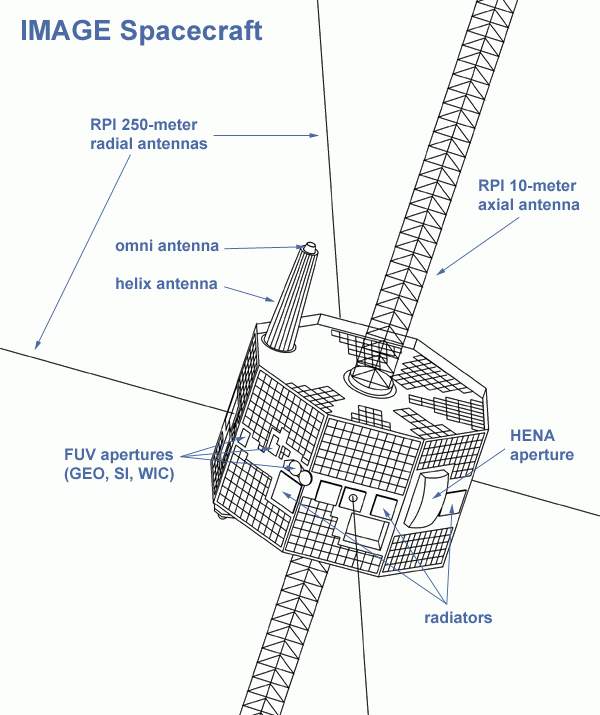NASA Will Try To Restart Long-Lost IMAGE Satellite, Explains Process

UPDATE: 11:15 p.m. EST — NASA confirmed Tuesday the object discovered by amateur astronaut Scott Tilley was its IMAGE satellite, with which communication had been lost in December 2005.
“On the afternoon of Jan. 30, the Johns Hopkins Applied Physics Lab in Laurel, Maryland, successfully collected telemetry data from the satellite. The signal showed that the space craft ID was 166 — the ID for IMAGE,” NASA said in a statement.
Data from the spacecraft suggested its main control system was still operational, and further analysis of the data will reveal more information about what state the spacecraft is currently in. However, that “will take a week or two to complete as it requires attempting to adapt old software and databases of information to more modern systems,” the space agency said.
Original story:
Days after an amateur astronomer found an object in high-Earth orbit and deduced it was NASA’s long-lost Imager for Magnetopause-to-Aurora Global Exploration satellite, the space agency confirmed the object drifting in space was IMAGE. And in an announcement Tuesday, NASA said it would try to restart the science payload aboard the satellite.
IMAGE was launched on March 25, 2000, from the Vandenberg Air Force Base, California, and was initially designed for a two-year mission. In that time, it was supposed to “image Earth’s magnetosphere and produce the first comprehensive global images of the plasma populations in this region.” But the mission was extended and performed its task well beyond that time frame.
However, the satellite failed to make contact during a routine pass Dec. 18, 2005. NASA tried rebooting it during an eclipse in 2007, but that didn’t work either, and the mission was written off, the satellite left to drift in space, as another piece of space junk orbiting Earth.
Scott Tilley, an amateur astronomer, runs a blog — “Riddles in the Sky” — which is “dedicated to observing, mostly classified, satellites.” He was looking for Zuma, the secretive satellite launched by SpaceX for an unnamed government organization early in January that went missing soon after. Instead, on Jan. 20, Tilley found another satellite whose signal identified it as IMAGE.

On hearing about the discovery, NASA used five separate antennae to capture the radio signal being transmitted by the satellite, and on Monday, confirmed that the “observations from all five sites were consistent with the radio frequency characteristics expected of IMAGE. Specifically, the radio frequency showed a spike in the expected center frequency, as well as sidebands where they should be for IMAGE. Oscillation of the signal was also consistent with the last known spin rate for IMAGE.”
Now that the satellite, which seems to have come back from beyond its grave, has been found again, NASA wants to be absolutely sure it is the real deal. And for that, the agency said in its announcement it will try to capture data from the radio signal and analyze it. Given the fact that the technology used — both hardware and software — for IMAGE is from several years ago, this would prove tricky because it will involve reverse engineering a lot of equipment and operating systems.
If all goes well, and the data is decrypted successfully, NASA will try to turn on the currently-switched-off science payload, which will give scientists an idea of how the instruments on the satellite have held up through the intervening years. Once that status is known, NASA will decide its following course of action.
The cause behind the sudden failure of IMAGE could not be established, though the final report submitted by a review board set up to look into the incident listed a failure of the power supply as a possible reason.
© Copyright IBTimes 2025. All rights reserved.



















